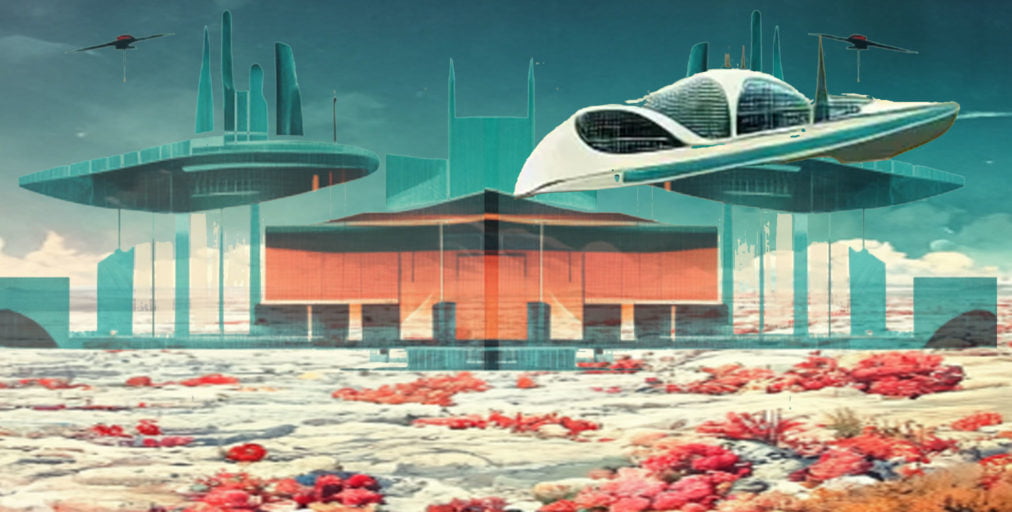
Science fiction writers have always been ahead of the game when it comes to predicting the future. Their imaginations are the blueprints for some of the most exciting inventions. Here are some inventions that are ready for the public now or will be soon.
Artificial Gravity Space Habitat
In 1931, the first artificial gravity spaceship/habitat was conceived by Jack Williamson in The Price of Space. California-based Vast is developing an artificial gravity space station that allows people to live and work in space for long periods without experiencing the negative effects of zero gravity. This would enable large populations to live and travel in space habitats.
Flying Taxis
Air taxis were first featured in a book published in 1968. Do Androids Dream of Electric Sheep envisioned air taxis and is also the book Ridley Scott based the screenplay Blade Runner on.
United Airlines has invested over $15 million in electric flying taxis. The first flying taxis may be delivered to United as early as 2026. According to United’s press release, they purchased 200 electric aircraft from EVE with four seats each, and United holds the option to buy another 200.
Hoverbikes
Hover vehicles have been appearing in science fiction stories for decades. A recent book featuring hoverbikes is The Alien’s Ransom: A SciFi Alien Warrior Romance (Drixonian Warriors Book 1).
AERWINS XTURISMO Limited Edition Hover Bike is available for order now. The price is way more than most people will ever be able to buy at $777,000.00, but it may lead the way for more affordable options.
Nanotechnology
There are several health uses of Nanotechnology about to break, including the diagnosis and treatment of cancer.
Nanoparticles can be used to capture cancer biomarkers, allowing more accurate, faster diagnosis. The dose of drugs delivered in chemotherapy can be significantly reduced with Nanoparticles. While not exactly as predicted in the thriller Nano, the actual uses promise life-changing results.
Robots
Isaac Asimov’s I, Robot series envisions a world of advanced, self-aware robots. Engineered Arts is producing lifelike robots for entertainment that can respond to people, maintain eye contact, and act as assistants.
NVIDIA introduced Isaac Sim to allow robot developers to test and train virtual robots speeding their development. According to Techcrunch+, Figure is developing a humanoid robot similar to Tesla’s Optimus Bot. With advances in AI, robots are likely to become even more advanced and able to communicate on a higher level.
AI
It’s impossible to bring up Robots without mentioning AI, which powers robots’ brains or central processing systems. As AI improves, so will central processors and other technologies. AI systems will speed up research and discoveries through mega computer systems able to process massive amounts of information quickly.
Neuromancer conceived a powerful AI when published in 1984. Art, literature, science, and medicine are all on the edge of or already experiencing advancements in AI. AI Images created with Midjourney have become so well done one recently won an art contest. AI writing programs have quickly advanced. Metastellar’s Amira Loutfi wrote 12 AI Tools to Write your Novel For you.
Neural Links
Skullcap by Steven Burgauer is a fictional novel about human-computer interfaces similar to Elon Musk’s Neuralink. Neuralink hopes to design a brain-computer interface implant that will allow individuals to control computers and applications through thought.
Self-Driving Cars
The Passengers by John Marrs imagines a scary world with self-driving cars. Motional launched self-driving Robotaxis with Lyft this year in Las Vegas. A free shuttle operated downtown during a test in Las Vegas from 2017 to 2018.
Tesla and Waymo continue to work toward bringing self-driving cars to the general public.
VR/AR
Snow Crash by Neal Stephenson and Ready Player One by Ernest Cline are two well know books about Virtual Reality. VR and Augmented Reality have been around for a while, but both are continually improving and finding new uses in medicine, science, and education.
The University of Maryland opened a center this year to accelerate virtual reality for patient care. It also aims to incorporate AR into patient care.
Science VR is an indy studio about visualizing human knowledge. VR experiences can be downloaded to Oculus or watched in a 2D video on the site. Examples of experiences available on the site are Faraday’s Magnets – Physics, or Shelley’s Creation – Sci-Fi & Poetry.
Holograms
Isaac Asimov introduced holograms in the first book of the Foundation Trilogy.
Holograms are already a reality. In fact, holographic concert tours continue to improve and impress audiences. Some past artists that have been brought back to perform in concert include Tupac in 2014, Buddy Holly and Roy Orbison in 2019, and Whitney Houston last year.
Mary Stoll is a freelance editor, technology journalist, and speculative fiction author.

